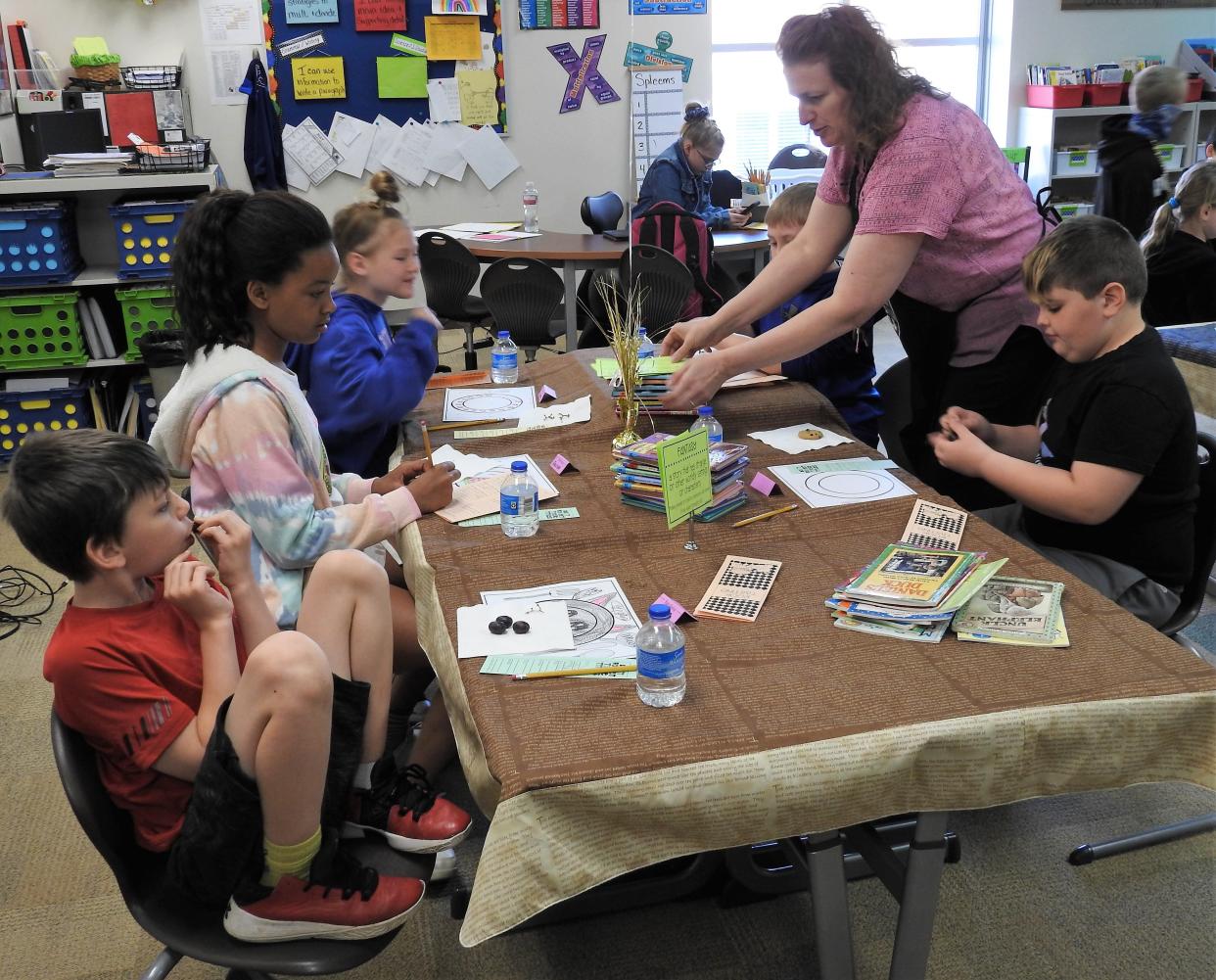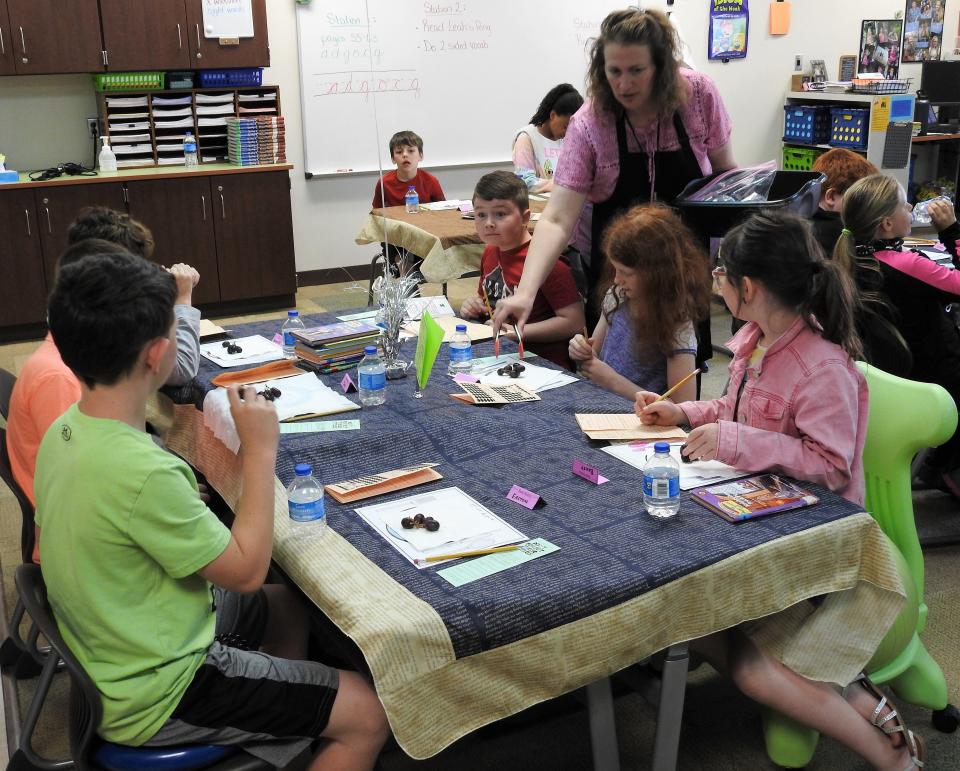Coshocton reading scores slip during pandemic

COSHOCTON — The COVID-19 pandemic has had a dramatic impact on the reading skills of Ohio's youngest students, according to state data.
The third-grade reading proficiency decreased statewide from 67% in the 2018-19 school year to 51.9% in 2020-21, said LM Clinton, the literacy policy administrator with the Ohio Department of Education.
“Third grade is definitely a critical point in a child’s development and their reading development and their academic development in general," Clinton said.
The 2020-2021 scores on Ohio’s State Test for English Language Arts for third-graders dropped in every school district in Coshocton County compared to the 2018-19 scores, according to state data.
The spring test for the 2019-20 school year was canceled due to COVID-19 because of school closings and the move to distance learning.
The test has five benchmarks or levels of ability: limited (with scores between 551-671), basic (672-699), proficient (700-724), accomplished (725-751) and advanced (752-870).
Local initiative
Coshocton City Schools saw third grading reading rates drop from 68.6% in 2018 to 2019 to 43.7% for 2020 to 2021. Ridgewood went from 81.2% to 57%. River View went from 83.3% to 51.6%.
Teachers are using inventive ways to encourage reading. Coshocton Elementary School recently had an event called a book tasting for third grade students. Kids spent time looking at books at different stations. They wrote down their initial thoughts and made note of books they wanted to read. Teachers wore aprons and served snacks, pretending they were running a café.
"We do it to get the kids excited about different genres of books. At the third grade level they tend to pick mostly fiction books. This is a way to expand their repertoire of books," said teacher Denise McPeak. "The students were really excited and wanted to do it again the next day."
Teacher Amy Unkefer said she got the concept from a website with ideas and activities for teachers. They did it for the first time last year.
"There are usually several kids who say, 'I'd never pick up that book,' but they tried it and liked it," she said.
Not only have students backslid on their literacy during the pandemic, but Unkefer said they've also lost the ability to interact. The reading taste helps to build social skills as well with students interacting with each other and encouraged to say please and thank you as snacks from cookies to grapes are passed out.
"It teaches them life skills and how to interact with people in the public in a polite way. They find they talk to each other more politely. Because I'm requiring them to say 'yes, please' and 'no, thank you.' You start hearing them say it to each other," Unkefer said.
Kaitlyn Ashbrook, director of Curriculum and Federal Programming for Coshocton City Schools, said the reading taste and other creative initiatives are key into encouraging reading among youth. The district also had a recent Family Reading Night and sponsored Little Free Libraries at the district's buildings, Coshocton Fire Department and local housing complexes. She said the district is also looking at improving and adding summer and afterschool programs.
"It takes a community to work together to educate our children and we have been encouraged with the amount of support our district has gotten through the last year from the community," Ashbrook said.
She admits the past few years with the pandemic have been a challenge. Instructors believe it's difficult for students to learn the foundations of reading without the support of the classroom environment.
"Without a solid foundation in reading, students will continue to struggle as they move through their academic career. Much of the learning they do in the upper grades is reliant on their ability to decode and comprehend text," Ashbrook said. "This carries on throughout the rest of life. Without the basic skills, they will struggle to do important tasks like complete a job application or pass a test to earn a credential or license needed for work. We must prepare our students not just to read successfully in the third grade, but to read to be successful in life."

A widespread problem
The drop in reading skills scores are not unique to Coshocton County, but reflects a common struggle experienced by school districts across Ohio and the nation.
Students in younger grades lost about a month and a half of instruction due to remote learning caused by COVID-19 despite concerted efforts, according to non-profit testing organization NWEA.
“That doesn’t sound hugely impactful, but when you think about how little these students have been in person at school, that’s a big learning loss,” said Laura Hansen, a senior manager for English language arts content and curriculum advocacy at NWEA.
A March 2021 study from the Stanford Graduate School of Education found that second- and third-graders were most affected by the pandemic’s impact on learning among students in the earliest grades.
Researchers examined 250,000 reading fluency scores for students in first through third grade in spring and fall of 2020 in more than 100 school districts across 22 states. They found that reading fluency dropped in 2020, with the ability of students in early grades to read aloud quickly and accurately about 30% lower than a typical year.
"Reading is kind of a gateway to the development of academic skills across all disciplines,” Ben Domingue, an assistant professor at Stanford GSE and an author of the study, said in a statement. “It’s a key that opens all of the doors. If a kid can’t read effectively by third grade or so, they’re unlikely to be able to access content in their other courses.”
Ohio’s State Test for English Language Arts is administered twice a year — once in the fall and once in the spring.
While both tests were given in the 2020-21 school year, fewer students took the state tests because of remote learning, Clinton said. There is no available option for students doing online schooling.
Before the pandemic, students who couldn't read at grade level by the end of third grade were held back as part of the state's Third-Grade Reading Guarantee. In December, Gov. Mike DeWine signed a bill that exempts districts from the retention requirements of the guarantee for this school year.
However, if a student’s principal and teacher, in consultation with the student’s parent, agree the student is reading below grade level and is not prepared to be promoted to fourth grade, the student may be held back.
Students who do not read proficiently by third grade are four times more likely to leave high school without a diploma than proficient readers, according to a 2011 study by the Annie E. Casey Foundation, a charitable foundation focused on improving the well-being of American children. The number rises when those students also come from poverty.
Leonard Hayhurst of the Tribune contributed to this story.
This article originally appeared on Coshocton Tribune: Coshocton reading scores slip during pandemic

